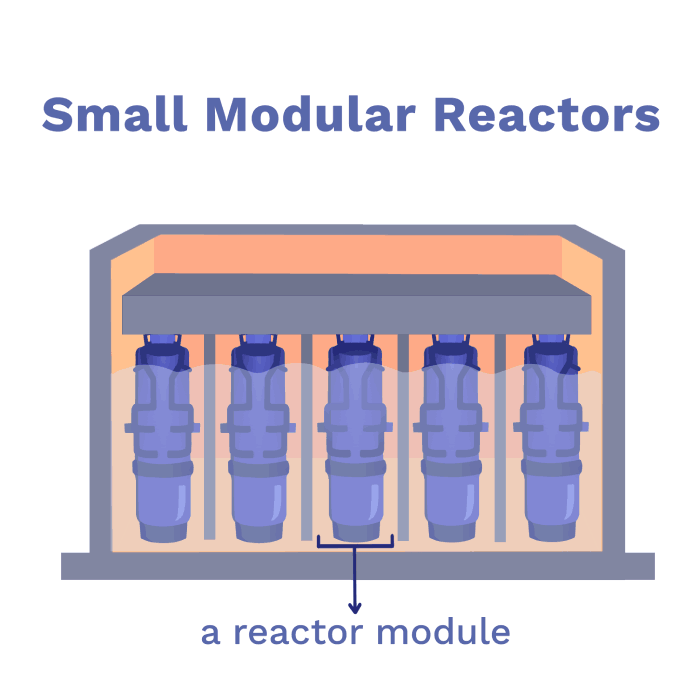Traveling Wave Reactors (TWR) are designed to use depleted Uranium-238 as fuel
are designed to use depleted Uranium-238 as fuel . TWRs produce 80% less radioactive waste (by mass) than conventional reactors
. TWRs produce 80% less radioactive waste (by mass) than conventional reactors .
.
Even more excitingly, TWRs could in principle recycle spent nuclear fuel
 , but significant research advances are needed for that
, but significant research advances are needed for that .
.
The key idea behind these reactors is that they make their own fuel . This can look as follows
. This can look as follows :
:
Here, we start off with U-238, which on its own can’t power normal nuclear reactors. Then, by adding a neutron, we turn it into U-239. U-239 quickly decays and becomes Plutonium-239, another radioactive material. This is what then powers the nuclear fission reactions and creates the heat that ultimately becomes the energy we get out of the reactor . All of this happens within the reactor!
. All of this happens within the reactor!
Like all other modern reactors, TWRs would shut down if there was a power outage, meaning they wouldn’t explode .
.
Work on TWRs has been going on for decades - unsuccessfully . But after years of computer models and re-thinking designs, a company called Terrapower (funded mostly by Bill Gates) now thinks they can achieve stable long-term operation
. But after years of computer models and re-thinking designs, a company called Terrapower (funded mostly by Bill Gates) now thinks they can achieve stable long-term operation
 .
.
Their prototype was supposed to be ready for use in 2022, but political tensions between the US and China meant that building stopped in 2018 . We will see where we go from here.
. We will see where we go from here.
So, what should we do?
Small Modular Reactors (SMRs) and conventional reactors are available now . They could replace coal for baseload electricity generation with near-zero CO₂ emissions. As outlined in the last chapter, modern nuclear reactors are extremely safe and don’t cause explosions
. They could replace coal for baseload electricity generation with near-zero CO₂ emissions. As outlined in the last chapter, modern nuclear reactors are extremely safe and don’t cause explosions . While nuclear waste is bad, we have to compare this to the dangerous CO₂ emissions and other pollution produced by burning fossil fuels.
. While nuclear waste is bad, we have to compare this to the dangerous CO₂ emissions and other pollution produced by burning fossil fuels.
Simultaneously, governments should allow companies to test advanced nuclear reactors at a much faster pace .
.
If you want to learn more about Advanced Nuclear, check out some of the concepts that we haven’t discussed in this chapter:
- Using Thorium: Instead of Uranium-235, using an element called Thorium as fuel
 .
. - Other coolants: Instead of water or molten salt, we can use gas or liquid metals
 .
. - Reactors without moderators: Fast Reactors can work directly with fast neutrons (today’s designs have to use a moderator to slow neutrons down, as discussed in the last chapter)
 . Conventional reactors need to slow neutrons to allow them to split U-235.
. Conventional reactors need to slow neutrons to allow them to split U-235.
Now, on to renewable energy!
Next Chapter? They could be ready to install very quickly after a state decides to purchase them. These reactors are called Small Modular Reactors (SMR). They are ‘modular’ because multiple small reactors (called ‘modules’) can be combined at the site to provide the same power as a conventional big reactor:
. However, many SMR designs are capable of passive cooling, meaning that a power outage does not cause a nuclear meltdown and explosion
.






